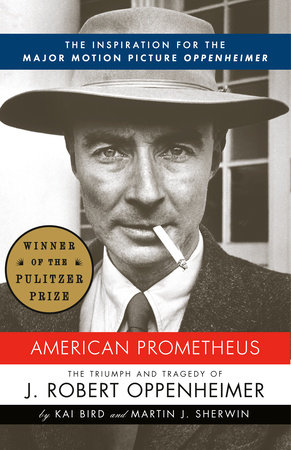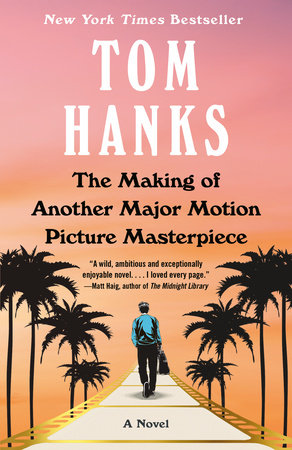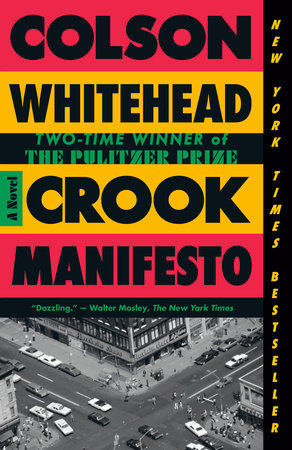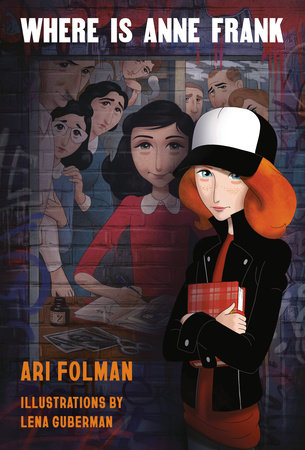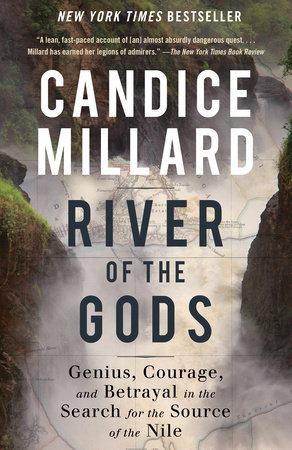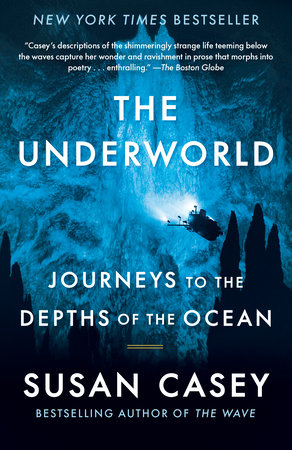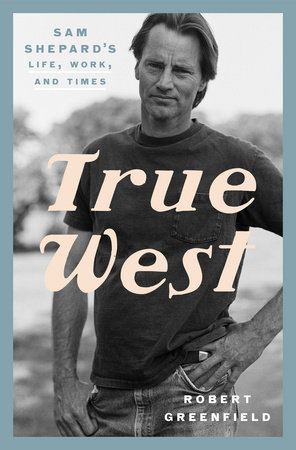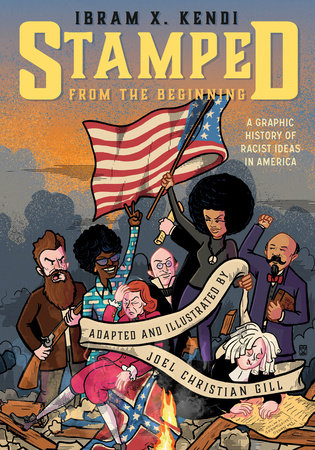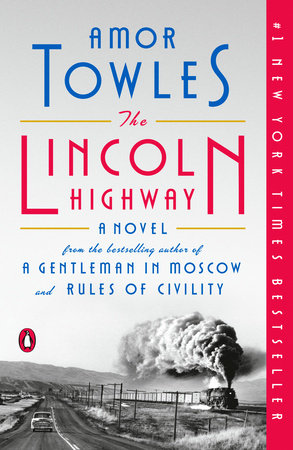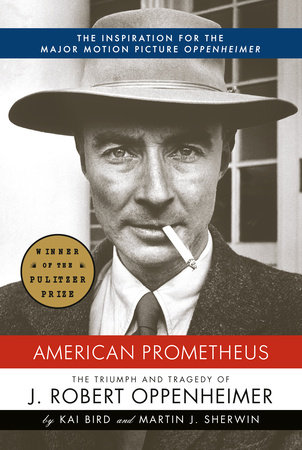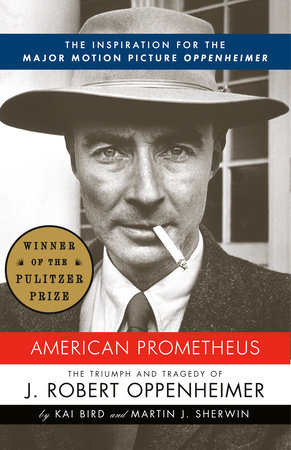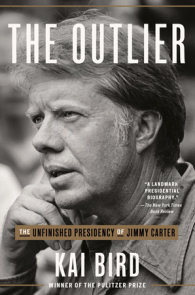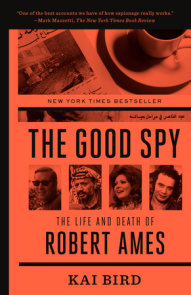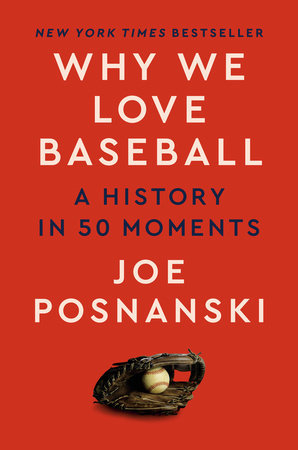Author Q&A
A Conversation with
KAI BIRD & MARTIN SHERWIN
authors of
AMERICAN PROMETHEUS
The Triumph and Tragedy of J. Robert Oppenheimer
Q: What is the “triumph” in Robert Oppenheimer’s life?
A: Oppenheimer’s greatest triumph was mixed with tragedy. He was both the “father” of the atomic bomb and its midwife. He directed the lab that built it, and without him–without his charismatic leadership, his intelligence, and the breadth of his scientific interests–it would not have been ready for use during the war. He made Hiroshima and Nagasaki possible. That was at first a triumph, a matter of great pride that was soon transformed into a heavy psychological burden when he realized that he had been misled about the need to use the bomb.
Q: What do you mean when you say that “he was misled about the need to use the bomb?” Wasn’t it necessary to end the war?
A: Whether atomic bombs needed to be used to end the war without an invasion is one of the great debates surrounding US policy and strategy during WWII. There are very good reasons to believe that the war would have ended in August 1945 even if we had not used atomic bombs. But that is a long discussion. To stay focused on Oppenheimer: he came to believe that he had been misled by the Truman administration. For example, he was not told during the war that the Japanese government had been trying to surrender since June on the condition that the emperor’s life and the institution of the emperorship be preserved. That’s how it turned out after all, and Oppenheimer was troubled that at least 225,000 Japanese–mostly civilians, mostly women and children–had been killed by the invention he guided and whose use he had supported.
Q: Were there other tragedies in his life?
A: Another tragedy was how our country treated him during the McCarthy period. He was a genuine American hero, a patriot whose country repaid him by putting him through
a kangaroo trial in 1954. The FBI wiretapped his home and office and monitored his every move. And though they found nothing that was actionable, his political enemies still branded him a security risk and humiliated him before the entire world. That was the country’s tragedy too.
Q: What was the background to Oppenheimer’s security hearing? How did such a travesty happen?
A: A great debate over the role of nuclear weapons in American strategic and diplomatic policy broke out in the fall of 1949 after the Soviet Union tested an atomic bomb in August. The first part of the debate was over whether the US should respond by building a hydrogen bomb–a nuclear weapon with absolutely no physical limit to its power.
Oppenheimer and all the other members of the General Advisory Committee to the AEC believed it was a genocidal weapon that was unnecessary for our security and he and they opposed its development. A few years later, Oppenheimer proposed that the government be more open about the nuclear decisions. He called this “operation Candor” and wrote about it in Foreign Affairs. He believed that too much secrecy was dangerous for a democracy in general and for the intelligent discussion of nuclear issues in particular.
He also opposed the plans of the Strategic Air Command whose intention it was to kill over two hundred million Soviet citizens should war occur. This was genocide not war, he argued.
Those who favored the policies that Oppenheimer opposed considered him dangerous and when the Eisenhower administration came into office in 1953 some of those people were in a position to destroy Oppenheimer’s influence. That was the background.
Q: And how did the hearing come about?
A: Lewis Strauss, a conservative Republican, was appointed chairman of the Atomic Energy Commission in July 1953. He and Oppenheimer had been on opposite sides of nuclear policy questions since 1948. Strauss had come to understand that Oppenheimer would always be opposed to the hydrogen bomb and other nuclear weapons, and therefore he distrusted him. We have discovered that between July and December 1953 Strauss orchestrated a conspiracy with the assistance of J. Edgar Hoover and several others to have Oppenheimer charged with being a security risk.
Furthermore, and this is important too, he orchestrated Oppenheimer’s security hearing and its review by the AEC commissioners to be sure that Oppenheimer was found unfit to hold a security clearance.
Q: What evidence did they have that he was a security risk?
A: They didn’t have anything that could be called evidence. They wanted to silence him and so they turned molehills into mountains. Aside from their political charge that he had opposed the hydrogen bomb–which was so outrageous that it was dropped by the AEC commissioners who reviewed the hearing verdict–there was the so-called “Chevalier affair.” Oppenheimer’s Berkeley friend, Haakon Chevalier, came to him in early 1943 and passed on to him a proposal to funnel scientific information to the Soviets. Oppie firmly rejected the notion–but to protect Chevalier he failed to tell his security officer about the approach until 4 months later and then he reported what he later called “a cock and bull story” to divert attention from Chevalier who he believed was an innocent conduit. This has truly been a mystery wrapped in an enigma, and we are confident that we have solved it.
Q: You suggest in your book that there are grounds for overturning the hearing board’s verdict. What are those grounds?
A: We believe we have uncovered legal grounds to overturn the verdict in Oppenheimer’s security hearing.
We show that the FBI illegally wiretapped Oppenheimer’s lawyer’s phone, thus violating the lawyer client relationship. This information was passed to Lewis Strauss and to the AEC prosecutor (Roger Robb) who used this illegally obtained information against Oppenheimer.
Furthermore, during the hearing itself, Robb violated Federal Regulations that govern the conduct of security hearings. For example, he showed Edward Teller some of Oppenheimer’s confidential testimony before Teller testified. He did this to be sure Teller testified against Oppenheimer.
Also, we have evidence that suggests that Strauss virtually bribed one of the Atomic Energy Commissioners to swing his vote against Oppenheimer. The whole proceeding was—as the dissenting member of the hearing board wrote—“a black mark on the escutcheon of our country.”
Q: What advice did Oppenheimer offer about nuclear weapons?
A: He always regarded the bomb as a weapon of terror. In 1946 he was asked in a closed Senate hearing room “whether three or four men couldn’t smuggle units of an [atomic] bomb in New York and blow up the whole city.” Oppenheimer said, “Of course it could be done, and people could destroy New York.”
Oppenheimer urged us to do everything possible to minimize our reliance on nuclear weapons and to work toward eliminating them. He understood that the world is better off –safer really–without nuclear weapons. He believed that we should work for the international control of all forms of atomic energy, as he did in the postwar period. He saw that unilateralism was not in America’s interest.
In 1946 he proposed what became known as the Acheson-Lilienthal Plan (it was really the Oppenheimer plan) which proposed the creation of an international atomic authority with sovereign control over all aspects of the nuclear industry. A small part of this plan has been put in place—he International Atomic Energy Authority with headquarters in Vienna, Austria. But the heart of the plan, which would eliminate nuclear weapons, has obviously been neglected.
Q: Are there any ironies in his life?
A: Here was a life devoted to social justice, rationality and science that would nevertheless someday become a metaphor for mass death beneath a mushroom cloud. That is the great irony in Robert Oppenheimer’s odyssey.
Q: I understand that this book was 25 years in the making. Why did it take you so long to write this book?
A: [Sherwin] There are many reasons. The first is that Oppenheimer’s life, his pre-public life especially, was hidden and complicated. I started this book in 1979 and worked steadily collecting material, conducting interviews and reading broadly. Then I got involved in academic administration. I founded Tufts’ Nuclear Age History and Humanities Center in 1985/86 just as the writing was seriously underway. Then in 1988 I organized a joint teaching venture between Soviet universities in Moscow and Tufts around the history of the nuclear arms race. Our classes were linked 4 times a year by satellite TV and simultaneous interpretation. Oppenheimer would have liked that; it brought operation Candor and Glasnost together. I was in Moscow 4-5 times a year. Then in 1993 I returned to my alma mater, Dartmouth College, to take over the John Sloan Dickey Center for International Understanding. By 1995-96, I knew I had to do something dramatic to re-start and complete this Oppenheimer biography. I made the decision to invite Kai Bird to be the co-author. And he made the brilliant decision to agree to my proposal.
A: [Bird] Almost any biography takes years to research and write. But Oppenheimer’s life is filled with numerous, seemingly impenetrable mysteries. Everyone who has tried to write about him in the past has concluded that he was “unknowable.” He was like the “Black Holes”—the existence of which he so famously predicted in 1939—no light could escape the magnetic draw of his personality. We felt that way for a time.
Q: How did the two of you end up collaborating?
We first met in the early 1980s. Kai had started his first book, a biography of John J. McCloy, and Marty was already buried in thousands of pages of FBI documents. And then in 1995 we collaborated on several articles related to the controversy at the Smithsonian Museum about the ill-fated Enola Gay exhibit. Five years ago we teamed up to finish this book. It has been a great collaboration.
Q: So what are some of the mysteries in Oppenheimer’s life?
A: His early life was known in outline, but not in detail and there we have been pretty good detectives. Our experience is somewhat like the experience that Lincoln scholars appear to be going through now. They are discovering a “new” Lincoln by discovering the early Lincoln. We have done our best to reveal and understand the young Robert Oppenheimer who is at the core of the complex and sometimes enigmatic “father of the atomic bomb.”
Q: What surprises did you encounter?
A: In 1926, at the age of 22, Oppenheimer was put on probation at Cambridge and required to see a Freudian analyst–all because of a so-called “poison apple” incident. That year he suffered a series of psychological crises. We explain what happened and show how his behavior in this crisis explains his oddly defensive behavior during his 1954 ordeal.
Q: What was “the poison apple” incident?
A: He apparently laced an apple with a toxic substance and left it on the desk of his Cambridge University tutor, P.M.S. Blackett, who was a distinguished scientist who later won a Nobel prize. Oppenheimer tried to retrieve the apple, but in some way what he had done was discovered and he was almost expelled.
Q: What made him do such a peculiar thing?
A: That, of course, is the interesting question and a clue to his troubled state at the time. It was his first year of postgraduate studies and he was studying something for which he was completely ill-suited–intellectually, emotionally and physically. He was studying experimental physics and he had neither the manual aptitude nor the interest in the physical challenges of laboratory work. He even contemplated suicide during that year. His whole life seemed to be coming apart. Blackett, an experimentalist, was a symbol of the source of his agony and he irrationally struck out at him. Perhaps it was a desperate effort to make him understand how deeply unhappy and forlorn he (Oppenheimer) was.
Q: Who were the women in his life?
A: He had many relationships and several great love affairs, all with smart, strong-willed women. His first love, Jean Tatlock, turns out to have been struggling with her bisexuality–and later committed suicide. Our book has the first detailed account of her suicide and the mystery that surrounds it.
He married Kitty Harrison in 1940 after a whirlwind love affair. She was married at the time, but divorced her husband and married “Oppie” all within the space of little more than 6 months. They did not have an easy marriage, but they stuck with each other through some very tough sledding that we discuss in detail in the book.
Oppenheimer was not a philanderer but he did have a very caring and sweet affair with Ruth Tolman, the wife of one of his friends, the physicist Richard Tolman. To his enemies this was scandalous. But “Oppie’s” friends (all his students and closest friends called him Oppie) and Ruth’s friends supported and protected them.
Q: Tell us more about his wife.
A: His wife, Katherine “Kitty” Pruening Oppenheimer, was a pretty, vivacious, mercurial woman. Truly worthy of a biography of her own. Oppie was Kitty’s fourth husband–her second husband was a Communist, Joe Dallet, who was killed in the Spanish Civil War. For a time in the 1930s she was an active Communist. But after marrying Oppie when she was 28 years old, she made him her life. Tough-minded, she was an anchor for him during the 1954 trial. Sharp-tongued and high-spirited, Kitty intimidated everyone. Sadly, she became one of those high-functioning alcoholics. And a terrible parent to her two children.
Q: Was Oppenheimer a Communist?
A: No. Other historians have said yes, but they have not produced any compelling evidence. Oppenheimer was never a member of the Communist Party, he never submitted himself to Party discipline, he never paid dues. But he was closer to the Party than he ever admitted, and gave thousands of dollars to causes–especially the Republican government in the Spanish Civil War–which were supporting the fight against Franco’s Fascists.
Q: What happened to him after the 1954 security hearing?
A: Well, to begin with, that summer he took his family to St. John in the Virgin Islands. Hilariously, the FBI feared a Soviet submarine might surface off the coastline and spirit Oppenheimer off behind the Iron Curtain. Actually, Oppenheimer fell in love with the island and eventually built a rustic cottage on the beach. He spent a few months every year for the rest of his life on St. John. (Our chapter about his life on St. John is totally new to the literature.) Otherwise, he continued his work as director of the Institute for Advanced Study in Princeton.
Q: So he was in effect Albert Einstein’s “boss” at the Institute?
A: Yes, in the sense that Oppenheimer was director of the Institute and Einstein was a faculty member. They were respectful colleagues, never really friends. They disagreed about physics and they approached life differently. Oppenheimer was a disciple of Niels Bohr’s brand of quantum physics–and Einstein was always skeptical about quantum physics, believing, he once said, that “God doesn’t play dice with the world.”
Q: When did Oppenheimer die?
A: Oppie was a chain-smoker. That’s one reason why we put an Alfred Eisenstadt photograph of him on the cover of our book. He’s dangling a cigarette from his lips, wearing his trademark pork-pie hat and looking very much like Humphrey Bogart. It is a stunning photo. But it was his smoking and throat cancer that killed him in 1967. He was only sixty-three years old. Kitty herself died in 1972. His daughter Toni died young in St. John in 1977, and his son Peter still lives in New Mexico and owns the ranch Oppie bought in the 1940s.
